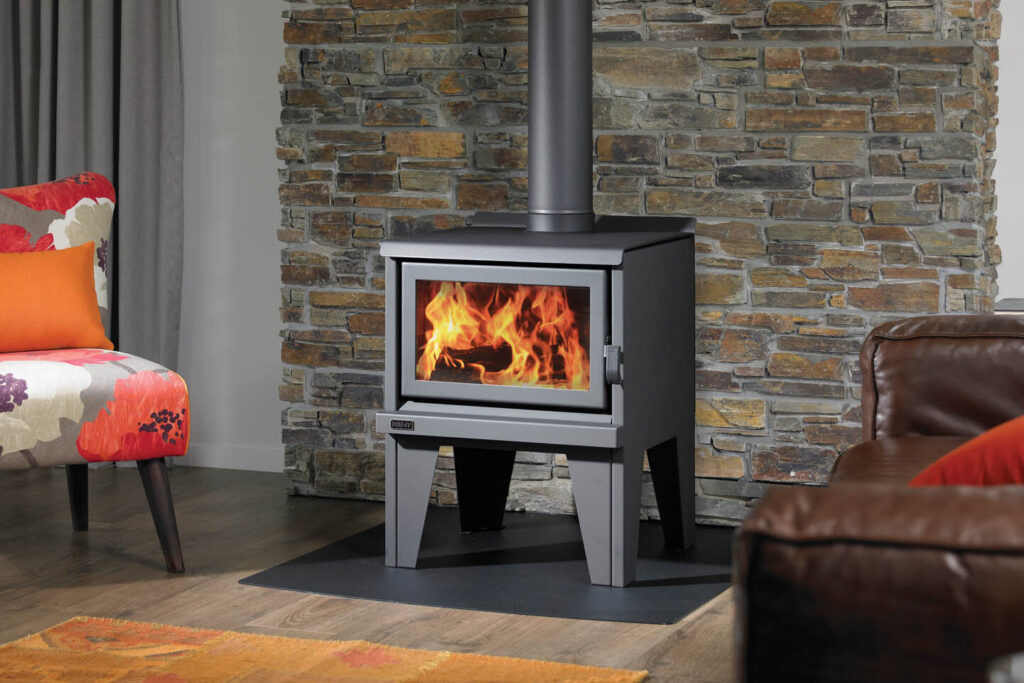
AUTUMN FIREPLACE MAINTENANCE TIPS FOR NEW ZEALAND HOMES
Autumn is the perfect time to give your wood fire a little love and attention. As the crisp mornings settle in, it’s a timely reminder to ensure your log burner is clean, safe, and ready for the cold season ahead.
Regular cleaning and inspection are key to improving heat output and performance, avoiding smoke damage and breathing hazards, preventing chimney fires and extending the life of your wood-burning unit. If you’re asking how often I should clean my fireplace in NZ, the general recommendation is to inspect and clean at the start and end of each burning season, or more often with heavy use.

5 ESSENTIAL MAINTENANCE JOBS FOR WOOD FIREPLACES
INSPECT YOUR CHIMNEY AND FLUE
To ensure safe airflow and prevent dangerous blockages.
The chimney and flue are critical components that safely vent smoke and gases from your home. Before lighting your fire for the season, have it inspected and cleaned
- Hire a professional chimney service specialising in chimney cleaning NZ
- Look for signs of creosote buildup, blockages, birds nests, debris, or damage flue liners
- A blocked or dirty flue can lead to poor performance or dangerous smoke buildup
For expert help, check out local chimney cleaning specialists or visit New Zealand Home Heating Association (NZHHA) for qualified professionals.
CLEAN YOUR FIREBOX AND GRATE
To prevent ash build-up for optimal efficiency.
Ash and debris build-up inside the firebox reduces your heater’s efficiency and can become a fire hazard.
- Use appropriate fireplace cleaning tools like an ash vacuum or stiff brush
- Clean out all the leftover ash from last season
- Protect your flooring with newspaper or an old sheet before you clean
- Always wear gloves and a dust mask to protect yourself from microscopic ash particles
CHECK THE DOOR SEAL AND GASKET
To prevent any leaks.
The door seal and gasket ensure no air leaks into the firebox and help maintain proper burning efficiency. A worn gasket can lead to smoke leakage, poor burn rate, and heat loss.
- Check the door to ensure it closes securely
- Inspect the gasket for signs of wear, cracking, or flattening
- If replacement is needed, browse our Kent range of spare parts
Looking for a non-toxic approach? You can clean your fireplace naturally using a mixture of white vinegar and baking soda. It’s perfect for cleaning soot off glass and metal without harmful fumes.
TEST THE DAMPER
To ensure optimal airflow.
The damper regulates the airflow and influences how quickly your fire burns. It should open and close smoothly, without sticking.
- Ensure it’s not rusted or blocked
- Open and close the damper to confirm smooth operation
- You can test your damper by lighting a small rolled-up newspaper fire and observing how airflow changes as you open and close it.
Reliable indoor wood fireplace maintenance starts with a good airflow and damper function.
sTOCK UP ON PROPER FIREWOOD
Firewood quality significantly affects the performance of your wood fire. Burning green or damp timber can cause excess soot and creosote build-up.
- Choose well-seasoned firewood that has dried for at least 6-12 months
- Ask your supplier how long the wood has been dried and stored
- Avoid burning treated wood, pine offcuts, or timber with a high moisture content
- Support your local community by buying from schools, sports groups, or community fundraisers
For more on what kind of wood is best to use with your wood fire, read our guide: What Kind of Firewood is Best?
For more fireplace advice, explore the following Kent resources:
- The Best Firewood for NZ Homes
- Replacement Gasket & Spare Parts

